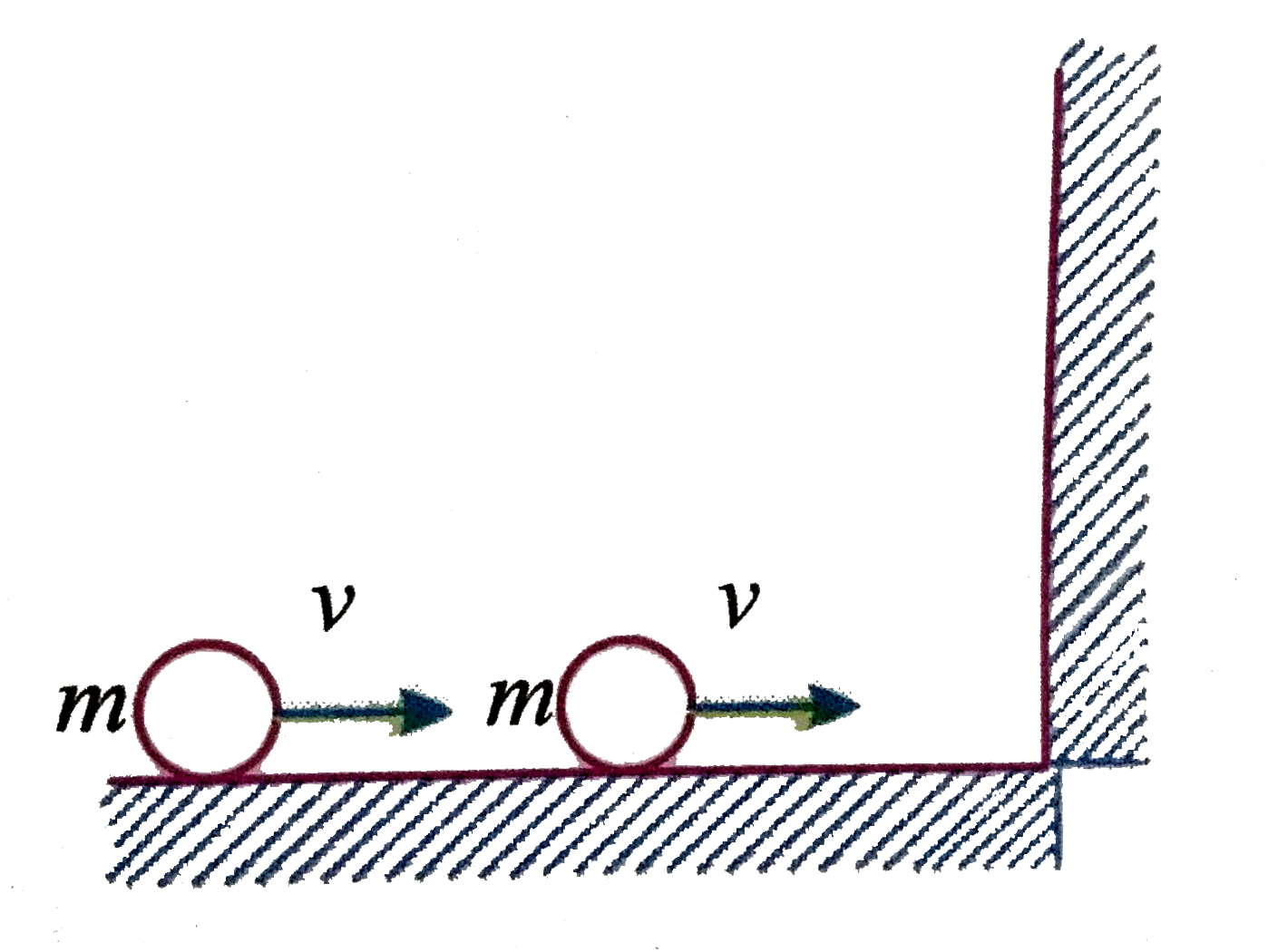A perfectly elastic ball P1 of mass m moving with velocity v collidies elastically with three exactly similar balls P2,P3,P4 lying on a smooth table as shown. Velocities of the four balls after the collision are
 Solution in Telugu
Solution in Telugu
v,v,v,v
0,2v,3v,4v
0,0,0,v
0,0,0,0
The correct Answer is:C
Step by step video, text & image solution for A perfectly elastic ball P_(1) of mass m moving with velocity v collidies elastically with three exactly similar balls P_(2),P_(3),P_(4) lying on a smooth table as shown. Velocities of the four balls after the collision are by Physics experts to help you in doubts & scoring excellent marks in Class 11 exams.
Topper's Solved these Questions
- BOOK - AAKASH SERIESCHAPTER - WORK, POWER & ENERGY EXERCISE - EXERCISE - II (Inelastic COLLISIONS)4videos
WORK, POWER & ENERGY
- BOOK - AAKASH SERIESCHAPTER - WORK, POWER & ENERGY EXERCISE - EXERCISE - II (PERFECTLY INELASTIC COLLISIONS)15videos
WORK, POWER & ENERGY
- BOOK - AAKASH SERIESCHAPTER - WORK, POWER & ENERGY EXERCISE - EXERCISE - II (VERTICAL CIRCLE)16videos
WORK, POWER & ENERGY
- BOOK - AAKASH SERIESCHAPTER - WORK POWER ENERGYEXERCISE - EXERCISE - 361videos
WORK POWER ENERGY
Similar Questions
A 1kg ball moving at 12ms−1 collides head on with a 2kg ball moving in the opposite direction at 24 m/s. The velocity of each ball after the impact, if the coefficient of restitution is 2/3, is
View SolutionA 60kg box sledge is travelling horizontally on ice at a speed of 10ms−1. A 90 kg packet is dropped on it vertically. The subsequent velocity of the sledge is
02:18View SolutionA mass of 0.1 kg is rotated in a vertical circle using a string of legth 20 cm. When the string makes an angle 30∘ with the vertical, the speed of the mass is 1.5ms−1. The tangential acceleration of the mass at that instant is
06:44View SolutionIf →A+→B=→Rand2→A+→B is perpendicular to →B then
03:03View SolutionA heavy ball of mass 2M moving with a velocity v_(0) collides elastically head on with a cradle of three identical ball each of mass M as shown in figure. Determine the velocity of each ball after collision.
01:46View SolutionA ball of mass m moving with velocity V, makes a head on elastic collision with a ball of the same moving with velocity 2V towards it. Taking direction of V as positive velocities of the two balls after collision are.
10:27View SolutionTwo balls each of mass 'm' are moving with same velocity v on a smooth surface as shown in figure. If all collisions between the balls and balls with the wall are perfectly elastic, the possible number of collisions between the balls and wall together is
 10:49View Solution
10:49View SolutionA perfectly elastic ball P_(1) of mass 'm' moving with velocity v collides elastically with three exactly similar balls P_(2), P_(3), P_(4) lying smooth table. Velocity of the four balls after collision are .
02:41View SolutionA ball of mass M moving with a velocity v collides perfectly inelastically with another ball of same mass but moving with a velocity v in the opposite direction. After collision
04:05View SolutionA ball of mass m moving with a velocity v undergoes an oblique elastic collision with another ball of the same mass m but at rest. After the collision if the two balls move with the same speeds , the angle between their directions of motion will be:
04:05View SolutionA ball A of mass M collides elastically with a similar ball B at rest as shown in figure. Initially velocity of ball A is u m/s. After collision,
06:44View SolutionA ball of mass m_(1) is moving with velocity 3v. It collides head on elastically with a stationary ball of mass m_(2) . The velocity of both the balls become v after collision. Then the value of the ratio (m_(2))/( m_(1)) is
02:25View SolutionA 10kg ball and 20kg ball approach each other with velocities 20ms−1 and 10ms−1 respectively. What are their velocities after collision if the collision is perfectly elastic?
01:24View SolutionA 10kg ball and 20kg ball approach each other with velocities 20ms−1 and 10ms−1 respectively. What are their velocities after collision if the collision is perfectly elastic?
01:09View SolutionTwo balls each of mass 'm' are moving with same velocity v on a smooth surface as shown in figure. If all collisions between the balls and balls with the wall are perfectly elastic, the possible number of collisions between the balls and wall together is
 06:28View Solution
06:28View Solution

